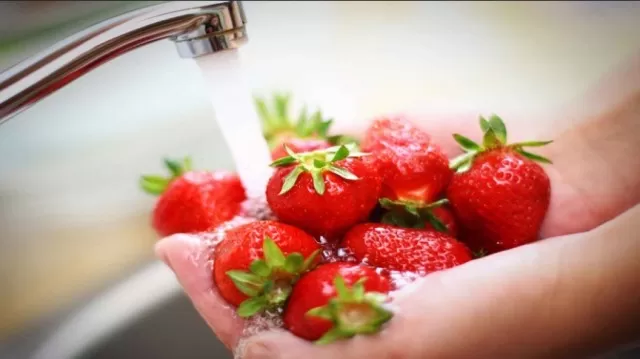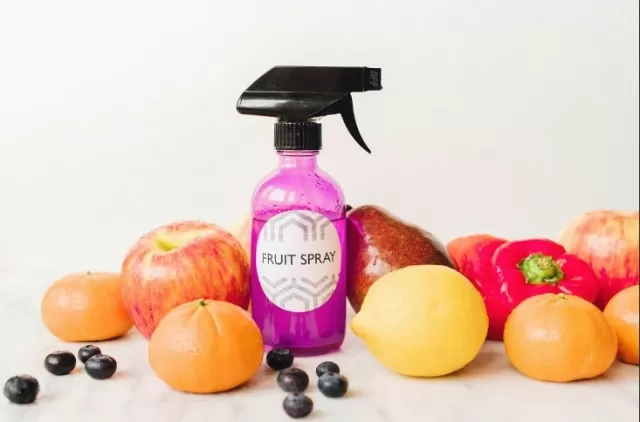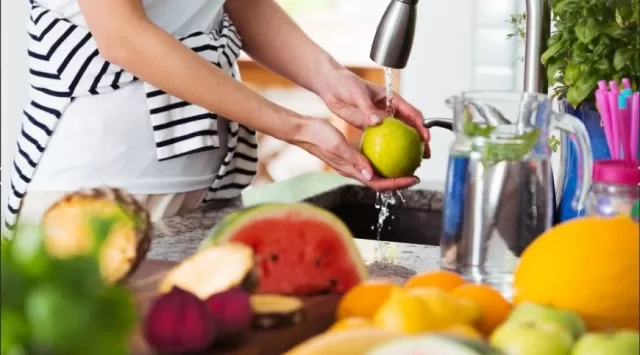Washing Apples and Other Fruit. For many, washing apples and other fruits is a routine practice, often done without much thought. While it may seem straightforward, there are several key factors to consider, such as the choice between soaking and using running water, the water’s temperature, and the type of brush or produce wash used (if any). These variables influence the effectiveness of fruit washing.
So, what is the correct method for washing fruit? Food safety experts shed light on the best way to wash fruit, including whether special store-bought washes outperform the use of water alone. The ideal method for fruit washing ensures that your produce is cleaned thoroughly and safely, and this article explores the expert-backed approach to achieve this goal.
The Importance of Washing Fresh Fruit: Protecting Against Contaminants

Washing fresh fruit is a critical step before consumption, as it helps remove contaminants that may lead to foodborne illness.
Experts from the Centers for Disease Control and Prevention (CDC) emphasize the importance of this practice.
Fresh fruit undergoes a lengthy journey before reaching your table—it travels from the farm to the grocery store or farmers market, and then to your cart, bag, and kitchen.
Throughout this journey, the fruit can come into contact with various contaminants, including dirt, microorganisms, and debris, which may originate from the environment or human hands. Bryan Quoc Le, Ph.
D. , a food scientist and author of 150 Food Science Questions Answered, highlights the significance of washing fruit to eliminate these contaminants.
Moreover, it is crucial to prioritize washing fruit when serving individuals with compromised immune systems.
According to Kimberly Baker, Ph. D.
, RD, LD, director of the Clemson Extension Food Systems and Safety Program Team, such individuals—including babies, young children, older individuals, pregnant individuals, and those with chronic diseases—are more vulnerable to severe sickness resulting from foodborne illness.
In summary, washing fresh fruit is a vital practice that helps remove contaminants, safeguarding against foodborne illnesses and protecting vulnerable populations.
How to Properly Wash Fruit: A Step-by-Step Guide

To ensure that your fruit is thoroughly cleaned and safe to eat, follow this step-by-step guide for washing fruit, as advised by experts Bryan Quoc Le and Kimberly Baker:.
Start by washing your hands with warm water and soap for at least 20 seconds.
Additionally, make sure your countertops, cutting boards, and utensils are clean and sanitized.
Place the fruit under cool running water.
The water temperature should be between 45 to 55 degrees Fahrenheit. Allow the water to run over the fruit for 10 to 20 seconds.
For porous fruits like strawberries, it’s recommended to wash them under running water for a full 20 seconds, as suggested by Bryan Quoc Le. Gently scrub the fruit’s surface to loosen any dirt.
For tender fruits such as berries, use a soft-bristle or silicone brush. For firmer-skinned fruits like apples, employ a vegetable brush.
Importantly, these brushes should be dedicated solely to cleaning produce, ensuring that no contaminants are introduced during use.
It’s important to note that washing fruit under running water is more effective than soaking it in a basin of water.
Running water helps remove dirt and pathogens from the fruit’s surface, preventing them from entering the fruit’s pores. Conversely, soaking fruit in wash water can allow pathogens to penetrate, and there’s a risk of cross-contamination between fruits in the water.Following these steps for washing fruit ensures that it is safe and clean for consumption.
Properly Washing Fruit: A Step-by-Step Guide

For the safe and effective cleaning of fruit, follow these expert-recommended steps as provided by Bryan Quoc Le and Kimberly Baker:.
Hand and Surface Preparation: Start by washing your hands with warm water and soap for a minimum of 20 seconds.
Additionally, ensure that your countertops, cutting boards, and utensils are clean and sanitized.
Rinse Under Running Water: Place the fruit under cool running water.
The water temperature should be between 45 to 55 degrees Fahrenheit. Allow the water to run over the fruit for a duration of 10 to 20 seconds.
For porous fruits, like strawberries, Bryan Quoc Le recommends washing them under running water for a full 20 seconds.
Gentle Scrubbing: Gently scrub the fruit’s surface to loosen any dirt or contaminants.
For tender fruits, such as berries, utilize a soft-bristle or silicone brush. When dealing with firmer-skinned fruits like apples, a vegetable brush is suitable.
It’s essential to dedicate these brushes exclusively to cleaning produce to prevent cross-contamination.
It is essential to highlight the importance of washing fruit under running water, as it is more effective than soaking it in a basin of water.
Running water facilitates the removal of dirt and pathogens from the fruit’s surface, preventing them from entering the fruit’s pores. Conversely, soaking fruit in wash water can allow pathogens to penetrate, and there’s a risk of cross-contamination between fruits in the water.
Adhering to these steps ensures that your fruit is thoroughly cleaned and safe for consumption.
*The information is for reference only.